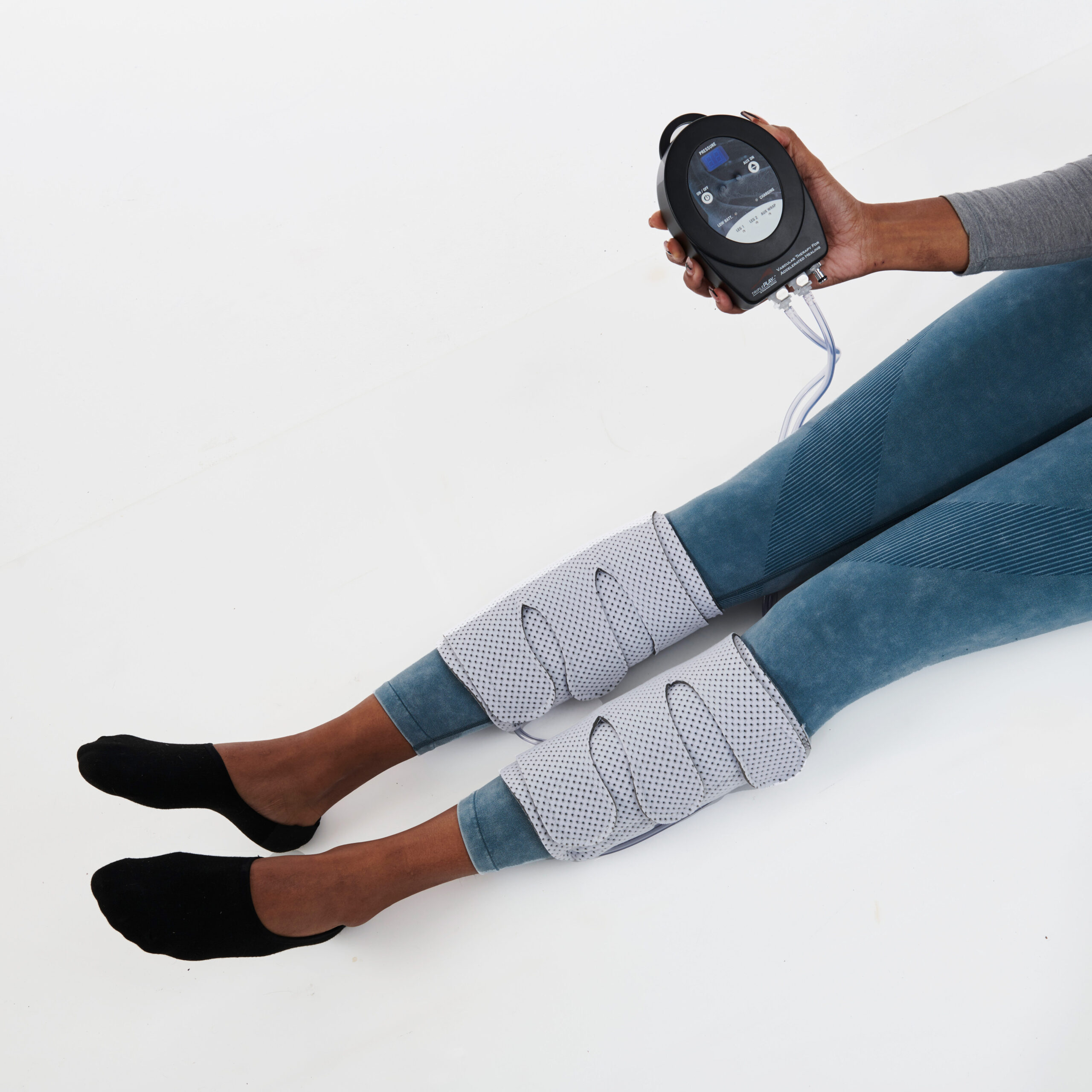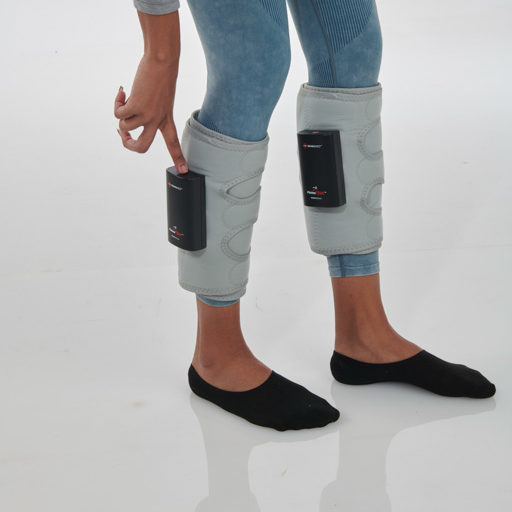Pneumatic compression therapy devices, also known as Intermittent Pneumatic Compression (IPC) devices, have become a common tool to prevent deep vein thrombosis (DVT) and improve recovery after surgery.
DVT is a serious medical condition where blood clots form in the deep veins, typically in the legs. According to the CDC, about 900,000 people are affected each year by DVT, and there are an estimated 60,000–100,000 related deaths in the U.S. alone1.
These numbers are alarming, but fortunately, many cases of DVT are preventable. Therefore, it’s important to understand how IPC devices can support recovery after surgery and prevent DVT.
What Are Intermittent Pneumatic Compression Devices?
Intermittent pneumatic compression devices are medical devices designed to improve blood circulation, typically following surgery or periods of inactivity. These devices consist of compression sleeves that are attached to a pump. The pump inflates and deflates the sleeves in a rhythmic pattern, simulating muscle movement to help blood flow back to the heart.
This process of inflating and deflating mimics the natural movement of muscles during activities like walking. For people who are immobilized due to surgery or injury, this simulated movement can aid in the prevention of dangerous blood clots from forming.
Why is There a Risk of DVTs After Surgery?
Deep veins in our legs carry 90–95% of the blood from the legs back to the heart. Once the blood reaches the heart, it’s replenished with oxygen from the lungs and pumped through our arteries to the rest of the body. While arteries rely on the heart’s pumping action to move blood, veins don’t have that direct support. Instead, they partially depend on the muscles in our legs to contract and help push blood back to the heart.
Normally, this happens when we walk, move, or exercise. However, after surgery or an injury, many people are unable to move much, which slows down blood circulation. In those at risk of developing deep vein thrombosis (DVT), this slower circulation can lead to blood clots forming in the deep veins. If a clot breaks loose and travels to the lungs, it can block blood flow, resulting in a pulmonary embolism (PE), a dangerous and potentially life-threatening condition.
Who is At Risk of Developing DVTs?
In general, DVTs can be common in both men and women over 65 years of age. The risk of a DVT can be higher right after surgery when mobility is reduced and inflammation is high, or if a deep vein is injured. Some cancer therapies can also affect DVTs. Obesity and certain inherited blood disorders can also increase the risk of blood clots2.
Patients undergoing hip or knee surgery are at the highest risk of developing DVTs 2-10 days after surgery, and the DVT risk remains for about three months.
Without preventive treatment, up to 80% of orthopedic surgery patients will develop DVT and 10% will develop a PE3. This is why the American Academy of Orthopedic Surgeons (AAOS) recommends that surgeons use multiple methods of minimizing the risk of DVTs4. These DVT prevention strategies may include blood thinners, anti-clotting medication, and pneumatic compression devices.

Using IPC Devices for Recovery and DVT Prevention
Intermittent pneumatic compression devices are a popular, non-invasive option for DVT prevention. The sleeves apply gentle, periodic pressure to the legs or arms, improving circulation and helping to prevent the formation of clots. By mimicking the natural pumping action of leg muscles, IPC devices help maintain healthy blood flow, reducing the risk of blood clots.
In some cases, these devices are used alongside medications like blood thinners, but for those who prefer to avoid pharmaceuticals due to side effects like excessive bleeding, IPC devices provide a more natural solution. Unlike medications, these devices come with minimal side effects, such as mild warmth or rare skin reactions.
How Do These Devices Work?
IPC devices come in various forms, but the basic functionality is the same. The sleeve, which may cover the whole leg or a specific part, is connected to a pump that inflates and deflates it. This process is typically painless and is adjusted based on the patient’s needs. Some devices allow for sequential compression, inflating different parts of the sleeve at different times to maximize circulation.
Because many surgeries are now performed on an outpatient basis, these devices have become more affordable and can be used at home as well as in clinical settings. This flexibility makes them convenient for patients who need continued support during their recovery.


What are the Side Effects?
Leg and other types of compression machines are generally safe when diagnosed and used properly, with minimal side effects. The most common issues include mild warmth or discomfort under the sleeve, or, in rare cases, a skin reaction to the materials used. However, these reactions are typically mild and temporary. Still, it’s critical for healthcare providers to consider the contraindications.
Because the devices work by inflating and deflating to improve blood circulation, they are designed to be non-invasive. Serious complications are extremely rare, making leg compression machines a safe and effective option for many people when they are diagnosed and used correctly.
Benefits of Pneumatic Compression for Recovery
In addition to preventing DVT, intermittent pneumatic compression devices can accelerate recovery after surgery by improving circulation and reducing swelling. Some advanced devices combine cold compression therapy, which helps to manage pain and swelling, alongside mechanical compression. For example, devices like Triple Play VT offer both DVT prevention and cold therapy, making them ideal for patients recovering from orthopedic procedures5 6 7 8.
Alternatives for Recovery and DVT Prevention
While IPC devices are highly effective in DVT prevention, they are not the only option. Blood-thinning medications, known as anticoagulants, are often prescribed to reduce clotting risks. However, these medications come with their own risks, such as excessive bleeding9.
Simple movement can also aid in preventing blood clots. After surgery, even small actions like pointing and flexing the feet can help maintain circulation. As mobility increases, taking short walks, when approved by healthcare provider, is an essential part of the recovery process to support healthy blood flow.
Is an Intermittent Pneumatic Compression Device Right for Your Patients?
Intermittent pneumatic compression devices offer a safe, effective way to aid in the prevention of DVT and support recovery after surgery or injury. Whether used alone or in conjunction with other treatments, these devices provide a natural solution with minimal side effects, making them a great choice for many patients.
If your patients are recovering from surgery, have a history of DVT, or are at risk due to other medical conditions, consider whether an IPC device is a good right for them. The benefits of improved circulation, reduced swelling, and accelerated recovery may make it an essential part of their treatment plan. Plus, by partnering with Compression Solutions, you have access to not only modern IPC devices that combine cold and compression therapy, but also expert medical billing services that simplify and expedite reimbursements. With Compression Solutions, you can improve patient care and surgery recovery while maximizing efficiency in your surgery center.
This article was originally published February 6, 2024.
References
- CDC. (2022, June 9). Data and statistics on venous thromboembolism. Retrieved September 15, 2022, from Centers for Disease Control and Prevention website: https://www.cdc.gov/blood-clots/toolkit/cancer-infographic.html ↩︎
- CDC. (2022b, June 9). Learn about healthcare-associated venous thromboembolism. Retrieved October 2, 2023, from Centers for Disease Control and Prevention website: https://www.cdc.gov/blood-clots/risk-factors/ha-vte.html?CDC_AAref_Val=https://www.cdc.gov/ncbddd/dvt/ha-vte.html ↩︎
- Prevention and treatment of blood clots after hip and knee replacement surgery. (2016, May 19). Retrieved October 2, 2024, from Stop the Clot website: https://www.stoptheclot.org/about-clots/toolkit-for-knee-hip-replacement-patients/joint-replacement-surgery/ ↩︎
- Flevas DA, Megaloikonomos PD, Dimopoulos L, Mitsiokapa E, Koulouvaris P, Mavrogenis AF. Thromboembolism prophylaxis in orthopaedics: an update. EFORT Open Rev. 2018 Apr 27;3(4):136-148. doi: 10.1302/2058-5241.3.170018. PMID: 29780621; PMCID: PMC5941651. Retrieved October 2, 2024, from https://www.ncbi.nlm.nih.gov/pmc/articles/PMC5941651/ ↩︎
- Raynor, M, Pietrobon, R, Guller, U, Higgins, L. Cryotherapy after ACL reconstruction: a meta-analysis. National Library of Medicine. 2005.
↩︎ - Cohn, B.T., Draeger, R.I., Jackson, D.W. The effects of cold therapy in the postoperative management of pain in patients undergoing anterior cruciate ligament reconstruction. National Library of Medicine. 1989. ↩︎
- Capps, S.G, Mayberry, B. Cryotherapy and Intermittent Pneumatic Compress for Soft Tissue Trauma. Athletic Therapy Today. 2009. p. 2-4. ↩︎
- Crawford, D.A., Andrews, R.L., Morris, M.J., Hurst, J.M., Lombardi, A.V., Berend, K.R. Ambulatory Portable Pneumatic Compression Device as Part of a Multimodal Aspirin-Based Approach in Prevention of Venous Thromboembolism in Outpatient Total Knee Arthroplasty. Arthroplasty Today. 2020. ↩︎
- NHS Choices. 2019. “Side Effects – Anticoagulant Medicines.” NHS. 2019. Retrieved October 2, 2024, from https://www.nhs.uk/conditions/anticoagulants/side-effects/. ↩︎
